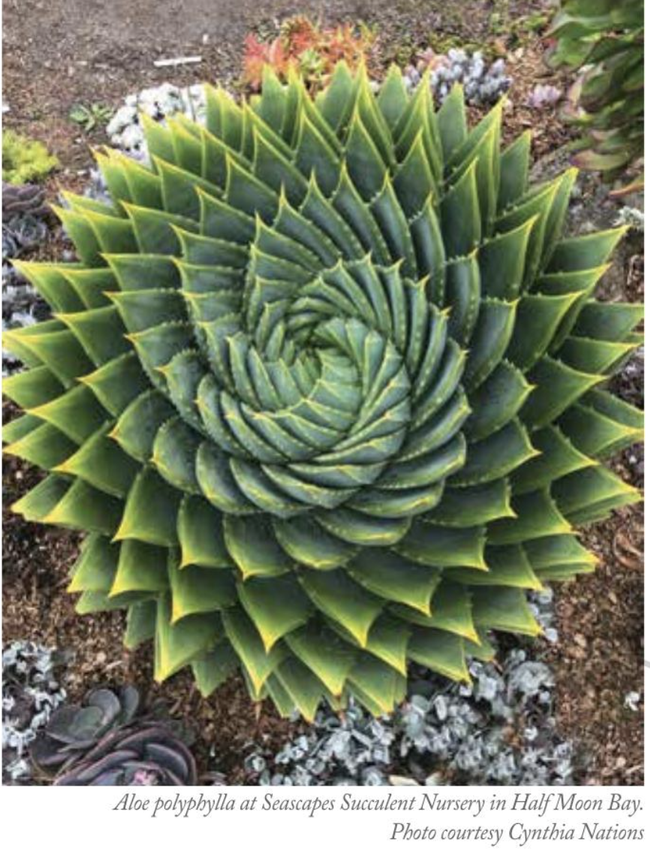Enjoyment of the world around us and in our gardens is a deep-rooted and multifaceted aspect of the human experience. The serenity of a well-maintained and organized green space that includes vibrant colors of blooming flowers, branching of trees, the arrangement of seeds in many plants, and the arrangement of leaves on a stem are some of the many reasons why people derive such pleasure from gardens. The human brain has evolved to recognize patterns in the environment, and the Fibonacci sequence and golden ratio can be seen as pleasing patterns that are both simple and complex.
Current scientific research finds evidence that Fibonacci numbers and Golden Ratio mathematical principles appear in many patterns and structures in nature. The Fibonacci sequence is a mathematical pattern where each number is the sum of the two preceding numbers (e.g., 0, 1, 1, 2, 3, 5, 8, 13, 21, 34, etc.). The golden ratio is a mathematical ratio of approximately 1.618:1 and is often represented by the Greek letter phi. The attraction to the Fibonacci sequence and golden ratio in gardens is likely a combination of their natural occurrence in the environment and their ability to create pleasing patterns and proportions that evoke a sense of balance and harmony. In addition, the Fibonacci sequence and the golden ratio are associated with growth and abundance, making them symbolic of prosperity and success.
The beauty of flowers, carefully arranged and nurtured, often follows the Fibonacci sequence in the arrangement of their petals and seeds. Pattern arrangement adds an extra layer of fascination to the world of flora. Many flowers exhibit a petal count that corresponds to Fibonacci numbers. For example, lilies often have three petals, buttercups have five, Shasta daisies have 21, and dandelions have 34. Other examples include the White Calla Lily (1 petal); Euphorbia (2 petals); Iris (3 petals); Larkspur, Hibiscus, and wild Rose (5 petals), Black-eyed Susan and Delphiniums (8 petals); Pyrethrum Daisy (34 petals); and Michaelmas Daisies (89 petals). One of the most noticeable manifestations of the Fibonacci sequence in flowers is seen in the spirals of Sunflower seed heads. The seeds of these flowers form spirals that radiate from the center. The numbers of these spirals, when counted in opposite directions, are often consecutive Fibonacci numbers. The most common arrangements are 21 and 34 spirals, or 34 and 55 spirals. This mathematical harmony is not only visually appealing but also serves a practical purpose. The optimal packing of seeds ensures efficient use of space, maximizing the plant's reproductive success.
Many gardeners enjoy succulent plants that form geometrical spirals like sunflowers. Some spirals are more perfectly arranged than others. Aeonium ‘Emerald Ice' has concentric rosettes that form spirals; Aeonium ‘Zwartkop' leaves are purple-black and form spiral rosettes at the edge of the stem; Agave ‘Blue Glow' leaves are lance-shaped, and the rosettes are less compact than succulents with smaller leaves; the leaves of Agave victoriae reginae are geometrical and form rosettes from the bottom without a stem; and Echeveria imbricata often has near-perfect rosettes in which the leaves are saucer shaped. Aloe polyphylla (Spiral Aloe) is one of the best-know spiral succulents. The rosettes form a perfect Fibonacci clockwise or counter clockwise spiral.
Attached Images:

